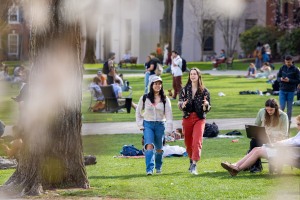PROVIDENCE, R.I. [Brown University] — For Brown University doctoral student Eric Ewing, teaching his first college-level class is a long-awaited dream that is finally taking flight.
Through a course being offered for the first time at Brown this semester — called Computer Science 1952Z: Robots as a Medium: Creating Art with Teams of Robots — Ewing is helping to offer undergraduates an introduction to using robots to create paintings, music and even choreographed movements.
For Ewing, the course is helping to advance his greatest passion: making robotic systems and robotics curricula more accessible.
“Part of the great appeal for me getting into computer science and CS education was that anyone with a laptop or access to a computer and the internet could learn how to program, but robotics is typically much harder to get into because you actually need a robot,” Ewing said. “So it’s increasingly important for me to make sure that robotics education becomes as accessible as computer science education has become — and the easiest way to do that practically is for the people with robots to provide those types of opportunities.”
